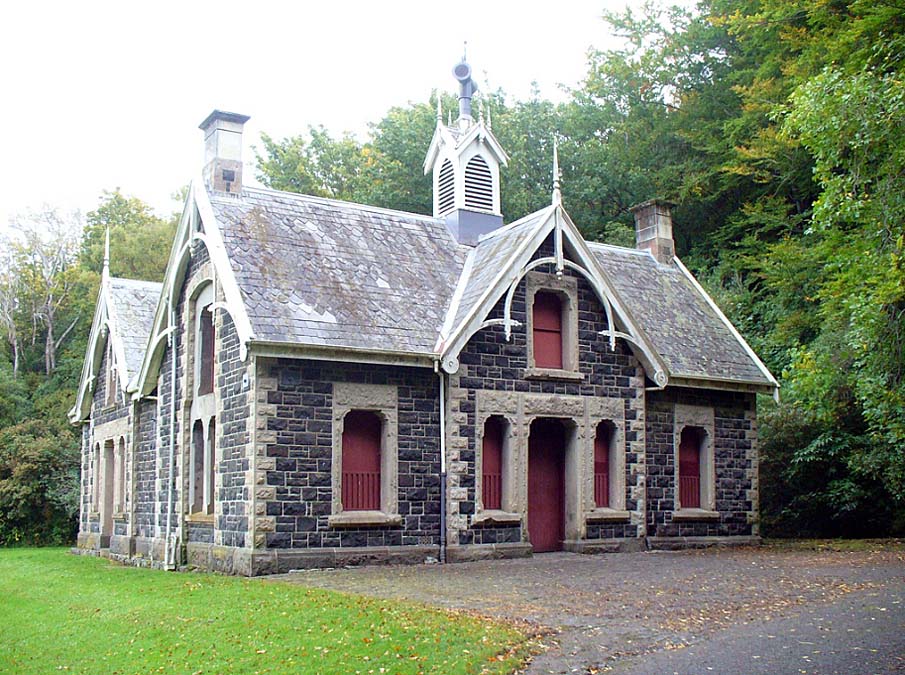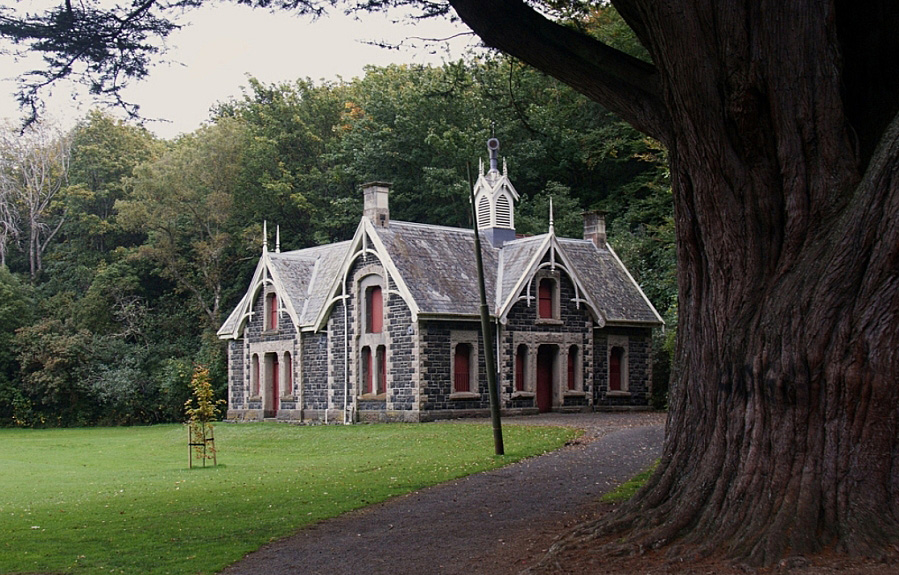Set in extensive gardens, the handsome stone Chingford Stables, built in 1880, are the last remnant of the estate of Dunedin merchant Percival Clay Neill. The building recalls the life of this nineteenth century businessman and his family. Dr Andrew Buchanan bought this land in the early 1860s as a base for his visits to Dunedin from his pastoral property at Patearoa on the Maniototo Plain. Buchanan set about establishing the buildings necessary for a comfortable life – a homestead, stables, dairy, and coachhouse. After Buchanan returned to England in the 1870s, Dunedin importer P.C. Neill of Neill & Co. bought the property and developed it into an extensive estate. Neill enlarged the house and, to shelter the horse he rode to work up and down the valley and the other horses on the estate, built this substantial stone stable and a coachhouse in 1880. The stable and coachhouse were designed by prominent Dunedin architectural partnership Mason and Wales. Chingford Stables are Neo-Gothic in style. The building is T-shaped with elaborate gables at the end of each arm and smaller ‘dormer’ gables in the centre of each arm. There is an elaborate ventilator over the centre of the main gable and a large stone arch over the double coach doors in the rear wall. There is a yard of oblong cobbles in front of the main gable. The stables are built of Leith Valley andesite with facings of pale Port Chalmers breccia. The roof is slate with mixed bands of fish-tailed and square slates. The basement has smaller blocks of andesite under a heavy band of Port Chalmers breccia. The interior was lined with tongue and groove panelling, and the floors were plaster with a cobble pattern. The stalls were divided by cast iron columns supporting a cast iron frieze. Originally the windows were lead-lit; however, the leadlight windows have been replaced by painted timber. In May 1890, the Otago Daily Times reported that ‘a stable and coachhouse’ at Chingford was ‘destroyed by fire’ the previous evening. The horses, harness and buggies were saved, but by the time the brigade arrived ‘it was then almost hopeless to attempt to combat the flames, which had obtained a very strong hold.’ The building was ‘completely gutted.’ Soon afterwards, Neill & Co. advertised for tenders for ‘Carpenters, Plumbing, Painting, and Slating Work’ on the stable at Chingford. Plans and specifications were available at the offices of Neill & Co. From this notice it is assumed that the interior of the stables was reinstated. P.C. Neill owned Chingford until his death in 1936. After Neill died, Dunedin City Council bought the property and developed it as a park and recreation grounds. At the time the council took on the property, all of the estate buildings were standing. The homestead was demolished in 1968, and the coachhouse in the 1990s. The stables remain as a monument to Neill’s estate. In 2014, Chingford Stables stand in the park planted by P. C. Neill, the remnant of his grand estate, and are used as a venue for weddings and community events.


Location
List Entry Information
Overview
Detailed List Entry
Status
Listed
List Entry Status
Historic Place Category 1
Access
Private/No Public Access
List Number
2146
Date Entered
7th July 1988
Date of Effect
7th July 1988
City/District Council
Dunedin City
Region
Otago Region
Extent of List Entry
Extent includes part of the land described as Pt Lot 29 DP 4921 (RT OT11D/798), Otago Land District, and the building known as Chingford Stables thereon.
Legal description
Pt Lot 29 DP 4921 (RT OT11D/798), Otago Land District
Stay up to date with Heritage this month
